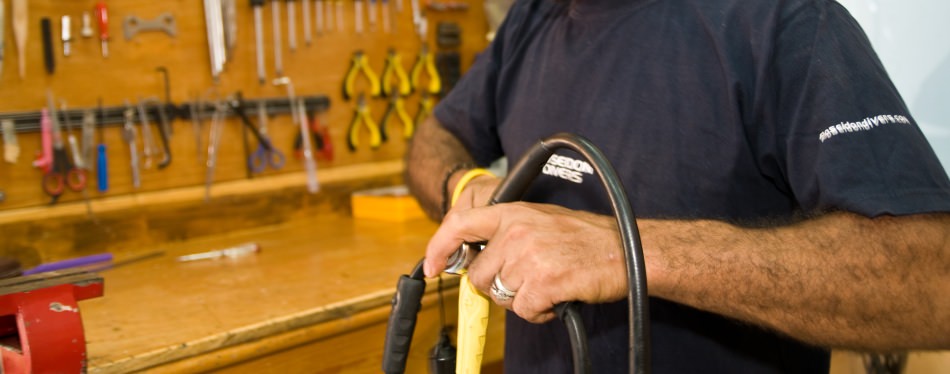
- By Jonpaul
Regulators
What does a regulator do?
The regulator is arguably the most important piece of equipment in scuba diving. Without it we wouldn't be able to dive. But it is just a tube from a tank of air, isn't it?
What you may not realise is what happens when we take a breath. We don't pull in a breath of air, rather we create a space and the air just naturally fills it. We have a weak muscle (muscular diaphragm) that moves to expand our rib cage. This creates a vacuum / area of low pressure that air fills by rushing to equalise the pressure. We call this suction. When the muscle relaxes the lungs spring back to their smaller size, pushing the air out.
The diaphragm is weak because it doesn't need to be strong. It only has to create a space by overcoming the pressure outside the body. As the air rushes in it fills the vacuum meaning only a little strength is needed to carry on moving the rib cage.
Now think about what happens if you tried to take a breath underwater where the pressure outside the body is greater than the pressure at the surface. On the Open Water course you are taught that the deeper you go the more pressure there is from the water. In the sea, at 10m depth there is twice the pressure around you as there is at the surface. If you had a snorkel to the surface you would find you could start to take a breath, but not a full breath. Your diaphragm may be strong enough to start expanding your rib cage, but the pressure from the air rushing in would not be enough to counter the pressure outside your chest. You would feel like you can't take a real breath and this would be true. You wouldn't be able to fully expand your chest and take a full breath. (Also with a 10m long snorkel you would be breathing in the air you have just breathed out, but that's another story).
The regulator takes the air that is put into your scuba tank at high pressures and reduces it to the same pressure as the water around you. This is done in 2 stages. It is done using calibrated springs. The first stage reduces the pressure to "intermediate" pressure, which is still higher than the pressure around you and the second stage supplies air to your mouth at the same pressure as the water around you. This allows you to take a breath in exactly the same manner as you would on the surface, making it feel completely normal.
When you start to breathe, by contracting your diaphragm to expand your chest, you create an area of low pressure that pulls at the regulator and makes it open so the air can flow into your lungs. The air is now at the same pressure as the water around you.
